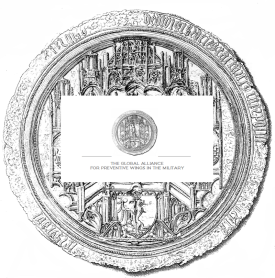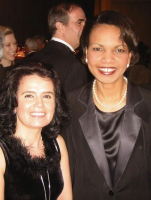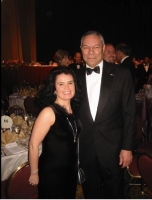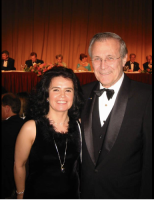The TM Group Practice Effect
Select References
Research on the IDT Effect,
The Combined Impact of the Unified Field Technology
(TM & TM Sidhi technique Group Practice Effect)
[ELR √1%] and [ELR 1%] Model Field Tests
- D.W. Orme-Johnson, C.N.Alexander and J.L. Davies, H.M. Chandler, and
W.E. Larimore, “International Peace Project in the Middle East: The Effect of the Maharishi Technology of the Unified Field,” Journal of Conflict Resolution 32(4)(1988), 776-812. - D.W. Orme-Johnson, M.C. Dillbeck, C.N Alexander, “Preventing Terrorism and International Conflict: Effects of Large Assemblies of Participants in the Transcendental Meditation and TM- Sidhi Programs, “Journal of Offender Rehabilitation 36:1-4 (2003), 283-302. Also in C.N. Alexander, K.G. Walton, D.W. Orme-Johnson, R.S. Goodman, and N.J. Pallone, The Transcendental Meditation Program in Criminal Rehabilitation (New York: Haworth Press, 2003).
- K.L. Cavanaugh, P. Gelderloos, “U.S. Soviet Relations and Maharishi Effect: A Time Series Analysis,” presented at the Annual Meeting of the American Statistical Association, Social Statistics Section, Atlanta, Georgia, August 18-22, 1991.
- M.C. Dillbeck, and M.V. Rainforth, “Impact Assessment Analysis of Behavioral Quality of Life Indices: Effects of Group Practice of the Transcendental Meditation and TM-Sidhi Program, “ Proceedings of the American Statistical Association, Social Statistics Section (Alexandria, Virginia: American Statistical Association,1996), 38-43.
- T.M. Nader, C.N. Alexander and J.L. Davies, “The Maharishi Technology of the Unified Field and Reduction of Armed Conflict: A Comparative, Longitudinal Study of Lebanese Villages,” Collected Papers 4, 2623-2633.
- D.W. Orme-Johnson, M.C. Dillbeck, J.G. Bousquet, and C.N. Alexander, “An Experimental Analysis of the Application of the Maharishi Technology of the Unified Field in Major World Trouble Spots: Increased Harmony in International Affairs” Collected Papers 4, 2532-2548.
- C.N. Alexander, T.M. Abou Nader, K.L. Cavanaugh, J.L. Davies, M.C. Dillbeck, R.J. Kfoury, and D.W. Orme-Johnson, “Effects of the Maharishi Technology of the Unified Field on the War in Lebanon: A Time Series Analysis of the Influence of International and National Coherence Creating Assemblies,” Collected Papers 4,2687-2714.
- D.W. Orme-Johnson, K.L. Cavanaugh, C.N. Alexander, P. Gelderloos, M.C. Dillbeck, A.G. Lanford, and T.M. Abou Nader, “The Influence of Maharishi Technology of the Unified Field on World Events and Global Social Indicators,” Collected Papers 4, 2730-2762.
- J. Davies, C.N. Alexander, “Alleviating Political Violence through Reducing Collective Tension: Impact Assessments of Lebanon War,” Journal of Social Behavior and Personality 17, 285-338.
- P. Gelderloos, K.L. Cavanaugh, and J.L. Davies,
“The Dynamics of U.S.-Soviet Relations, 1979-1986: Effects of Reducing Social Stress through the Transcendental Meditation and TM-Sidhi Program,”
Proceedings of the American Statistical Association, Social Statistics Section (Alexandria, Virginia: American Statistical Association, 1990). - P. Gelderloos, M.J. Frid, P.H. Goddard, X. Xue, and S.A.
Lőlliger, “Creating World Peace through the Collective
Practice of the Maharishi Technology of the Unified Field : Improved U.S.-Soviet Relations,” Social
Science Perspectives Journal 2(4)(1988),80-94. - R.S. Goodman, ”The Maharishi Effect and Government: Effects of a National Demonstration Project and a Permanent Group of Transcendental Meditation and TM-Sidhi Program Practitioners on Success, Public Approval, and Coherence in the Clinton, Reagan, and Bush Presidencies” (Ph.D. diss., M.U.M.,1997), UMI#9735103, UMI Dissertation Abstracts 58-06A (1997), 2385.
- M.C. Dillbeck, K.L. Cavanaugh, T. Glenn, D.W. Orme-Johnson, and V. Mittlefehldt, “Consciousness as a Field: The Transcendental
Meditation and TM-Sidhi Program and Changes in Social Indicators”, The Journal of Mind
and Behavior 8(1) (1987), 67-104. - D.W. Orme-Johnson, P. Gelderloos,
”The Long-Term Effects of the Maharishi Technology of the Unified
Field on the Quality of Life in the United States (1960-1983),” Social Science
Perspectives Journal 2(4)(1988), 127-146. - W.J. Zimmerman,
“Improved Quality of Life During the Rhode Island Ideal Society Campaign,”
unpublished research manuscript, Maharishi European Research University,
Seelisberg, Switzerland, n/d. - D.L. Reeks,
“Improved Quality of Life in Iowa through the Maharishi Effect” (Ph.D. diss.,
M.U.M., 1991), Dissertation Abstracts International 51(12) 91991), 6155B. - J. Norman, ” Study: Iowa is tops for raising children.” “The Des Moines Register (Wednesday, July 29, 1988), A1.
- Iowa Development Commission: Research and Development Group. “ Iowa’s Quality of Life as Compared to the Nation” (Des Moines, Iowa, Iowa Development Council, May,1985).
- M.A. Strauss, A.S. Linsky, and R. Bachman-Prehn, “Change in the Stressfulness of Life in American States and Regions from 1976 to 1982” (New Hampshire: Department of Sociology and Anthropology and State and Regional Indicators Archive, University of New Hamshire, 1988).
- Zero Population Growth, “Urban Stress Test how 192 U.S. Cities Compare on
Population-Linked Pressures”(Washington, D.C.: Zero Population Growth, Inc., 1988). - P.D. Assimakis, M.C. Dillbeck, “Time Series Analysis of Improved Quality of Life in Canada: Social Change , Collective Consciousness, and the TM-Sidhi Program, Psychological Reports 76 (1995), 1171-1193.
- I/ K.L. Cavanaugh, “Time Series Analysis of U.S. and Canadian Inflation and Unemployment: A Test of a
Field-Theoretic Hypothesis, “ Proceedings of the American Statistical Association, Business and Economics Section (Alexandria, Virginia: American Statistical Association,1987), 799-804.
II/ K.L. Cavanaugh, and K.D. King,
“Simultaneous Transfer Function Analysis of Okun’s Misery Index : Improvements in the Economic Quality of Life Through Maharishi’s Vedic Science and Technology of Consciousness, ” Proceedings of the American Statistical Association, Business and Economics Statistics Section (Alexandria, Virginia: American Statistical Association, 1988), 491-496. III/ K.L. Cavanaugh, and K.D. King, “Simultaneous Transfer Function Analysis of Okun’s Misery Index : Improvements in the Economic Quality of Life Through Maharishi’s Vedic Science and Technology of Consciousness,” presented at the Annual
Meeting of the American Statistical Association, New Orleans, Louisiana,
August 22-25, 1988. IV/ K.L. Cavanaugh, and K.D. King, and C. Ertuna,
“A Multiple-Input Transfer Function Model of Okun’s Misery Index: An Empirical Test of the Maharishi Effect, “Proceedings of the American Statistical Association, Business and Economics Statistics Section (Alexandria, Virginia: American Statistical Association, 1989). V/K.L. Cavanaugh, and K.D. King, and B.D. Titus, ”Consciousness and the Quality ofEconomic Life: Empirical Research on the Macroeconomic Effects of the Collective Practice of Maharishi Transcendental Meditation and TM-Sidhi Program, “Proceedings of the Midwest Management Society (Chicago: Midwest Management Society, 1989), 183-190. - G.H. Hatchard,
"Maharishi Vedic Economy: Wholeness on the Move – An Analysis of Improved
Quality of Life and Enhanced Economic Performance through the Application of the Maharishi Effect in New Zealand, Norway, USA, Mozambique, and Metropolitan Merseyside, UK, (Ph.D. diss., M.U.M., 2000), Dissertation Abstract International 61 (04B) (2000), 2271. - J. Davies, and C.N. Alexander,
”The Maharishi Technology of the Unified Field and the Improved
Quality of Life in the United States: A Study of the First World Peace
Assembly, Amherst, Massachusetts, 1979,” Collected Papers 4, 2549-2563. - A.G. Lanford,
"The Effect of the Maharishi Technology of the Unified Field on Stock Prices of Washington, D.C. Area Based Corporations,1980-83: A Time Series Analysis, “Collected Papers 4, 2609-2615. - M.B. Beresford and G. Clements, “The Group Dynamics of Consciousness and the U.K. Stock Market,” Collected Papers 4, 2616-2622.
- S. Gowing,
"What Does the Maharishi Technology of the Unified Field Mean for Social Work: A Study in Australia, “ BSW honor thesis, University of Sydney, Australia (1986). - C.L. Borland and G.S. Landrith III,
“Improved Quality
of City Life through the Transcendental
Meditation Program: Decreased Crime Rate,” Collected Papers 1, 639-648. - G. Hatchard,
“Influence of the Transcendental Meditation Program on Crime Rate in Suburban
Cleveland,” Collected Papers 2, 1199-1204. - M.C. Dillbeck,
“Influence of the Transcendental Meditation Program and a Compound Probability Model as Predictors of Crime Rate Change.” Presented at the Midwest Sociological Society Meeting, Omaha, Nebraska, 1978, Collected Papers 4, 2496-2514. - M.C. Dillbeck, G.S. Landrith III, D.W. Orme-Johnson, ” The Transcendental Meditation Program and Crime Rate Change in a Sample of Forty-Eight Cities, ” Journal of Crime and Justice 4, 25-45.
- M.C. Dillbeck, C.B. Banus, C. Polanzi, and G.S. Landrith III, “Test of a Field Model of Consciousness and Social Change: The Transcendental Meditation and TM-Sidhi Program and Decreased Urban Crime,” The Journal of Mind and Behavior 9, (1988), 457-485.
- M.C. Dillbeck, G.S. Landrith III, C. Polanzi, and S.R. Baker, “The Transcendental Meditation Program and Crime Rate Change: A Casual Analysis, “Collected Papers 4, 2515-2520.
- W.H.P.M. Burgmans, A.T. van der Burgt, F.P. Langenkamp, and J.H. Verstegan, “Sociological Effects of the Group Dynamics of Consciousness: Decrease of Crime and Traffic Accidents in Holland,” Collected Papers 4, 2566-2582.
- G.H. Hatchard, A.J. Deans, K.I. Cavanaugh, and D.W. Orme-Johnson, ”The Maharishi Effect: A Model of Social Improvement. Time Series Analysis of a Phase Transition to Reduced Crime in Merseyside Metropolitan Area,” Psychology, Crime, and Law 2(3) (1996), 165-174.
- M.C. Dillbeck,
“Test of a Field Theory of Consciousness and Social Change: Time Series Analysis of Participation in the TM-Sidhi Program and Reduction of Violent Death in the U.S.,” Social Indicators Research 2 (1990), 399-418. Summary in Collected Papers 5, 3247. - G.S. Landrith III, M.C. Dillbeck,” The Growth of Coherence in Society through the Maharishi Effect: Reduced Rates of Suicides and Auto Accidents,” Collected Papers 4, 2479-2486.
- A.G. Lanford,
"Reduction in Homicide in Washington, D.C., through the Maharishi Technology of the Unified Field, 1980-83: A Time Series Analysis,” Collected Papers 4, 2600-2608. - M.C. Dillbeck, W.E. Larimore, and R.K. Wallace, “A Time Series Analysis of the Effect of the Maharishi Technology of the Unified Field: Reduction of Traffic Fatalities in the United States,” Collected Papers 4, 2589-2599.
- P.D. Assimakis,
“Change in the Quality of Life in Canada: Intervention Studies of the Effect of
the Transcendental Meditation and TM-Sidhi Program” (Ph.D. diss., M.I.U., 1989) Dissertation Abstracts International 50(5) (November 1989), 2203B.





